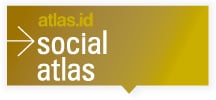Check the link text to the .id resources on your council website. Does it still say it has the “new” data from the 2001 census? We’ve checked and lots do!

As you know, the suite of .id tools (.id profile, .id atlas, .id economy, .id forecast) are managed websites, hosted and regularly updated by .id. Councils that subscribe to these tools provide a link from their own websites to the .id tools for their council area.
The links are normally under a Council website heading, such as “Community Demographics” or “Local Statistics” or “Population Statistics”.
Each link is normally prefaced with a brief explanation of the site such as:
The City of Example Community Profile is designed to inform community groups, Council, investors, business, students and the general public. To achieve this, the Profile is formatted to present the data in simple, clear tables and charts with concise factual commentary.
The City of Example Community Profile now includes the first release of results from the 20xx Census of Population and Housing.
So as you can see, it’s important to update this text to reflect the new Census 2011 data.
To update the links to reflect the latest census release data, we suggest you update your website link page with the following text for each of your .id tools. Just please remember to change “City of Example” with your own council name!
1. profile.id
The City of Example Community Profile enables you to analyse the population characteristics of your community, understand how they have changed over time and how they compare to other areas.
The profile presents data from the Australian Bureau of Statistics (ABS) Census of Population and Housing in 2011, 2006, 2001, 1996 and 1991 for the local government area, and for smaller areas within it (e.g. suburbs). This data is presented in easy to use tables, charts and commentary covering a wide range of Census questions.
The profile answers the majority of frequently asked socio-demographic questions and assists Council, the general public, students, community groups, organisations, business and investors to become more informed about the community.
You can also include a graphical element
To make it easier to find, you may like to place the link to the Community Profile behind a prominent button. We have created one that you can use, or you can create your own.

2. atlas .id
The City of Example Community Atlas presents key socio-demographic characteristics for the area in a series of interactive maps. Based on data from the 2011 Census of Population and Housing (Australian Bureau of Statistics), each map is prepared using the finest level of detail to help identify spatial patterns and trends in the area.
atlas .id graphical element:

3. forecast .id
The City of Example population forecasts outline the drivers of population change and forecasts how population, age structure and household types will change across your Local Government Area over the period 2006 to 2031.
This data is presented in easy to use tables, charts and commentary and is designed to inform community groups, Council, investors, business, students and the general public.
forecast .id graphical element:

4. economy .id
The City of Example economic profile draws on a variety of economic data sources to profile the characteristics of the local economy, how it compares to other areas and how it is changing. It enables users to accurately describe the economy, explore linkages across the economy and promote the region.
The economic profile answers the majority of frequently asked economic questions and assists Council, the general public, students, community groups, organisations, business and investors to become more informed about the local economy.
economy.id Graphical element:

Hope these suggestions have been useful to you. Do let us know if you have any queries using .id tools or leave us a comment to let us know what you think and how we can further improve our services!









.png)
.jpg)





